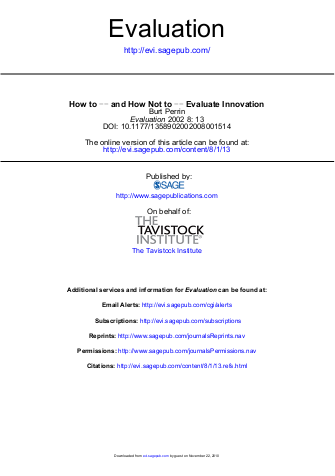
Many traditional evaluation methods, including most performance measurement approaches, inhibit rather than support actual innovation. This article discusses the nature of innovation, identifies limitations of traditional evaluation approaches for assessing innovation and proposes an alternative model of evaluation consistent with the nature of innovation. Most attempts at innovation, by definition, are risky and should ‘fail’ – otherwise they are using safe, rather than unknown or truly innovative approaches. A few key impacts by a minority of projects or participants may be much more meaningful than changes in mean (or average) scores. Yet the most common measure of programme impact is the mean. In contrast, this article suggests that evaluation of innovation should identify the minority of situations where real impact has occurred and the reasons for this. This is in keeping with the approach venture capitalists typically take where they expect most of their investments to ‘fail’, but to be compensated by major gains on just a few.
